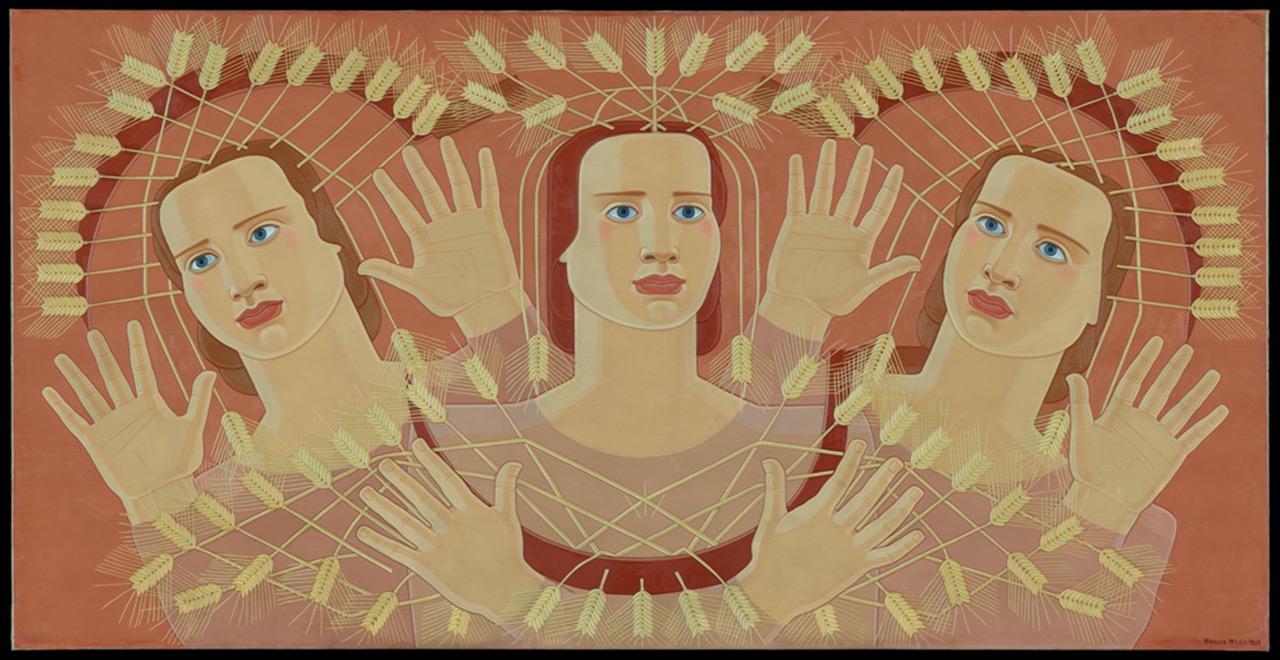CANTO DE LAS ESPIGAS | MARUJA MALLO
Maruja Mallo, an extraordinary Spanish painter, was born in 1902 in Viveiro, in the region of Galicia. At a time when access to art was almost exclusively a male privilege, Mallo boldly chose to enroll at the Academy of Fine Arts of San Fernando in Madrid, challenging societal prejudices and asserting her right to artistic expression. A pivotal moment in her artistic journey was her encounter with the leading figures of the Generation of ’27, a vibrant group of Spanish artists and intellectuals that included Salvador Dalí, Federico García Lorca, and Luis Buñuel. Mallo developed a personal visual language in which eccentricity and theatricality became tools of expression and freedom, interpreting Surrealism as a means of political and social engagement. Using vivid colors, suspended figures, and dreamlike spaces, Maruja Mallo created compositions rich in symbolic meaning, capable of denouncing injustice and oppression. At the heart of her visual poetics is the female figure—no longer confined to marginal or stereotypical roles, but portrayed as a central, emancipated, and powerful presence. Her women are icons of resistance, strength, and dignity, expressing a new, autonomous, and self-aware female identity.
The outbreak of the Spanish Civil War in 1936 marked a dramatic turning point in Mallo’s life: due to her open support for the Republic, she was forced into exile—first to Portugal, then to Argentina, where she remained for nearly 25 years. This long period of forced separation from her homeland led to a profound transformation in her artistic outlook. Mallo’s work became more socially engaged, increasingly focused on representing the reality of working-class life.
Among the most emblematic works from this period is Canto de las Espigas, created in Argentina. It stands as a true hymn to labor, particularly women’s work in the fields. In the painting, three female figures—or perhaps one woman represented three times—appear in a solemn pose, arms raised and palms facing the viewer, in a gesture that evokes both offering and resistance. Around them, a pattern of wheat spikes forms a geometric structure that suggests the rhythm and sacredness of agricultural labor. The painting is part of the series La Religión del Trabajo, composed of seven paintings celebrating the value of human labor: two dedicated to the land and five to the sea. In this series, the artist strongly asserts the dignity of manual work and the central role of women in both productive and social processes.
The work is currently on display in the exhibition Maruja Mallo: Máscara y Compás, curated by Patricia Molins, at the Centro Botín in Santander in collaboration with the Museo Nacional Centro de Arte Reina Sofia. The exhibition is accompanied by a catalog co-published by Fundación Botín, MNCARS, and the publishing house This Side Up, featuring texts by Alejandra Zanetta, Johanna Hedva, and the curator herself.
Maruja Mallo
Maruja Mallo: Máscara y Compás
Centro Botin
Until September 14, 2025
Maruja Mallo, Canto de las Espigas, 1939. Oil on canvas, 118 x 233 cm. Colección MNCARS
© Maruja Mallo, VEGAP, Santander, 2024
21/05/25

